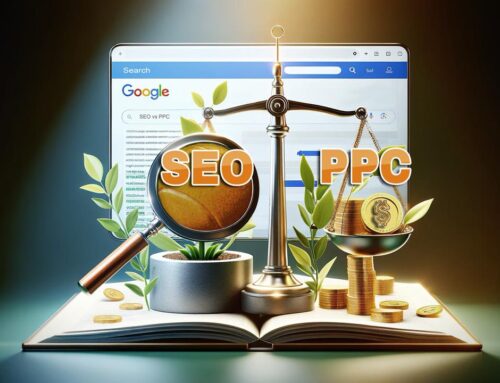Effective content optimization is no longer optional, it’s vital. As competition for attention intensifies, businesses need to ensure their content is not only interesting and engaging but also search engine friendly, user-focused, and value-laden. This comprehensive guide aims to equip you with an understanding of the most important strategies to optimize your content, allowing you to meet these challenges head-on.
Content Optimization Strategies: Maximizing Value for Your Digital Audience
Content optimization refers to the process of making your website’s content more attractive, useful, and actionable to users, thus boosting its visibility on search engine results pages (SERPs). It involves fine-tuning various components such as the content’s quality, relevancy, structure, SEO properties, and performance on different devices, among others.
By the end of this article, you’ll not only have a deep understanding of these optimization areas but also grasp how to effectively implement various strategies to improve your content performance. You will be equipped with practical, actionable tactics to create compelling, user-friendly content that ranks high on SERPs, leading to increased traffic, higher user engagement, and ultimately, improved conversion rates.
Table of Cvontents
- Understanding the Basics of Content Optimization
- Optimizing Content Quality and Relevance
- Improving SEO Properties
- Structuring Content for Better User Experience
- Content Performance Across Different Devices
- Frequently Asked Questions
- Final Thoughts
- Sources
1. Understanding the Basics of Content Optimization
In the grand scheme of digital marketing, content optimization serves as the blueprint for success. Understanding the intricacies of this concept is critical to maximizing the performance of your content and, by extension, your digital presence.
Content optimization is an umbrella term encompassing the strategies, techniques, and processes applied to make website content more attractive, useful, and actionable to users. In a broader perspective, it’s about ensuring that your content is tailored to your audience’s needs and interests, search-engine friendly, and primed to accomplish your business objectives.
Why is Content Optimization Important?
In the ever-competitive digital space, where thousands of content pieces are generated every minute, only the optimally tailored content cuts through the noise. Therefore, content optimization is paramount for several reasons:
- Improved SERP Rankings: Google and other search engines prioritize content that is relevant, high-quality, and valuable to their users. When your content ticks these boxes, it is more likely to appear higher on search engine results pages (SERPs), making it easier for your target audience to find you.
- Increased Organic Traffic: High-ranking content attracts more organic (non-paid) traffic. This organic traffic is often more sustainable and cost-effective in the long term compared to paid traffic.
- Enhanced User Engagement: Optimized content is designed with the user in mind. It resonates with the audience, encouraging them to spend more time on your site, share your content, and take desired actions such as subscribing to a newsletter or making a purchase.
- Higher Conversion Rates: When your content aligns with your audience’s interests and needs, it is more likely to convert them into customers. This is especially true when the content contains clear and compelling calls-to-action.
By understanding the basics of content optimization, you are well-positioned to create content that performs exceptionally in SERPs, engages your target audience, and ultimately, drives conversions. In the subsequent sections, we’ll delve into the key areas of content optimization and the strategies to improve them.
2. Optimizing Content Quality and Relevance
Creating High-Quality Content
When it comes to content optimization, the quality of your content is paramount. High-quality content is typically original, in-depth, well-researched, and provides value to the audience. Here’s how to create such content:
- Originality: Avoid duplicating content from other sites. Not only can this lead to penalties from search engines, but it also undermines your credibility with your audience. Instead, focus on generating unique insights and perspectives.
- Depth: Comprehensive content that covers a topic thoroughly tends to perform better in search engines. Make sure your content answers the key questions a user might have about the topic.
- Research: Back up your points with data and expert opinions. This not only enhances the credibility of your content but also makes it more useful to your audience.
- Value: Ultimately, your content should provide value to your audience. This could be in the form of solving a problem, providing new insights, or simply entertaining your audience.
Keeping Content Relevant and Fresh
Relevance and freshness are two key factors that search engines consider when ranking content. Here’s how to ensure your content remains relevant and fresh:
- Target Audience: Understand who your audience is and what they are interested in. Use audience research tools and techniques to uncover their needs, interests, and pain points. This will help you create content that resonates with them.
- Trending Topics: Keep an eye on industry trends and news. Creating content around these topics can help attract more traffic.
- Content Updates: Regularly revisit and update your old content. This is especially important for topics that change over time. By keeping your content up-to-date, you can improve its relevance and freshness.
- Keyword Research: Conduct regular keyword research to discover what your audience is searching for. Incorporate these keywords into your content in a natural and meaningful way.
By focusing on the quality and relevance of your content, you can improve its visibility on search engines, engage your audience, and increase your chances of converting them into customers.
3. Improving SEO Properties
The technical SEO properties of your content play a significant role in content optimization. Two primary factors to focus on are keyword optimization and the effective use of meta tags.
Keyword Optimization
Keyword optimization involves using relevant keywords that your target audience is likely to use when searching for the kind of content, products, or services you offer. Proper keyword optimization helps search engines understand the context of your content and rank it appropriately in SERPs. Here are a few strategies:
- Keyword Research: This involves identifying relevant keywords with good search volume and achievable competition. Tools like SEMrush, Google Keyword Planner, and Ahrefs can help with this.
- Keyword Placement: Once you’ve identified your keywords, include them in strategic places like the title, headings, and throughout the content. However, ensure their use feels natural and doesn’t disrupt readability.
- Long-Tail Keywords: These are longer and more specific keyword phrases. They can be easier to rank for due to lower competition and can also drive highly targeted traffic to your site.
- Semantic Keywords: Also known as LSI (Latent Semantic Indexing) keywords, these are related keywords or synonyms that help search engines understand the context of your content.
Meta Tags and Title Tags Optimization
Meta tags and title tags provide information about your webpage to search engines and users. Properly optimized, they can significantly improve your site’s SEO.
- Title Tag: This is the clickable headline that appears in SERPs. It should include your main keyword and accurately describe the page’s content. Keep it concise (between 50-60 characters) to avoid being cut off in SERPs.
- Meta Description: This is a brief summary of the page content that appears under the title in SERPs. It should be compelling, include relevant keywords, and stay within 160 characters.
- Header Tags (H1, H2, H3, etc.): These are used to structure your content and make it easier to read. Your main heading should be an H1 and include your primary keyword. Subheadings (H2, H3, etc.) should also include relevant keywords where possible.
- Alt Text: This describes an image to search engines and helps improve accessibility for users with visual impairments. Include relevant keywords in your alt text, but ensure it accurately describes the image.
Optimizing the SEO properties of your content is a crucial step in content optimization, making your content more visible and attractive both to search engines and your audience.

4. Structuring Content for Better User Experience
The way you structure your content can significantly impact user experience (UX) and SEO performance. Let’s discuss two key aspects: the inverted pyramid structure and the use of visuals.
Implementing the Inverted Pyramid Structure
The inverted pyramid structure is a journalistic writing style where the most crucial information is presented first, followed by supporting details, and then the background or additional information. This approach caters to internet users’ typical behavior, who want to quickly find what they’re looking for without scrolling through the entire content.
The structure typically looks like this:
- Lead: Start with the most critical and interesting information. This could be a key finding, a solution, or the conclusion of an argument. This immediately grabs your readers’ attention and provides them value upfront.
- Body: Next, present supporting information or arguments that back up the lead. Here, you can provide additional context or explain the concept in more detail.
- Tail: Lastly, offer background information or less critical details. This can include additional resources, related topics, or historical context.
This structure not only improves readability and engagement but also aligns well with search engine algorithms, which give more weight to the information provided at the start of a page.
Utilizing Visuals to Enhance Understanding
Visuals such as images, infographics, charts, and videos can greatly enhance user understanding and engagement. They break up large blocks of text, provide visual interest, and can often explain complex concepts better than text alone. Here are a few best practices:
- Relevance: Ensure your visuals directly support the content’s topic or points. Irrelevant visuals can confuse readers and detract from your content’s message.
- Quality: Use high-resolution images and videos. Poor quality visuals can make your site look unprofessional and could harm your brand’s image.
- Optimization: Optimize your images for web use. Large image files can slow down your page load times, which can harm UX and SEO. Use tools like TinyPNG or JPEGmini to reduce file size without sacrificing quality.
- Alt Text: As mentioned earlier, provide descriptive alt text for your images. This helps with SEO and accessibility.
By implementing an effective structure and utilizing visuals, you can significantly enhance the user experience, leading to better engagement and improved SEO performance.
5. Content Performance Across Different Devices
The performance of your content across various devices, especially mobile devices, is critical in today’s digital landscape. It affects both the user experience and search engine rankings. Let’s explore mobile optimization and page speed optimization as two key aspects of this.
Mobile Optimization
With the rise of smartphones, more people are accessing the web via mobile devices than desktops. As a result, search engines like Google have adopted mobile-first indexing, meaning they predominantly use a page’s mobile version for indexing and ranking. Thus, mobile optimization is no longer optional; it’s a must. Here are some key considerations:
- Responsive Design: This design approach ensures that your content looks and works well on all devices, regardless of screen size. It automatically adjusts the layout, images, and other elements to fit the screen it’s viewed on.
- Simplified Navigation: Mobile screens are smaller, which means you need to simplify your site’s navigation to make it easy for mobile users to find what they’re looking for.
- Font Size and Button Size: Text should be legible without zooming in, and buttons should be large enough to be easily tapped with a finger.
- Avoid Flash: Many mobile browsers don’t support Flash. Use HTML5 or JavaScript for animations or interactive elements.
Page Speed Optimization
Page speed, or how quickly your content loads, significantly affects your content’s performance across all devices. Slow-loading pages often lead to high bounce rates, as users typically lack the patience for slow websites. On the other hand, fast-loading pages enhance the user experience and are favored by search engines.
Here’s how to improve your page speed:
- Optimize Images: As discussed earlier, large image files can slow down your page load times. Make sure to optimize your images for web use.
- Enable Compression: Use software like Gzip to reduce the size of your CSS, HTML, and JavaScript files that are larger than 150 bytes.
- Minimize HTTP Requests: Each element on your site (images, scripts, CSS files) requires a separate HTTP request to load. Reducing these elements can speed up your page load time.
- Leverage Browser Caching: Browsers cache a lot of information (like images, stylesheets, JavaScript files), so when a visitor comes back to your site, the browser doesn’t have to reload the entire page.
By optimizing your content for mobile and improving page speed, you can offer a better user experience, increase engagement, and boost your search engine rankings.
Frequently Asked Questions
Final Thoughts
When optimizing content, the most important takeaway is to always keep the end-user in mind. User-focused content that is high in quality, relevant, well-structured, and performs excellently across devices is more likely to rank high on SERPs. Such content attracts more organic traffic, retains users longer on the page, and ultimately leads to higher conversions.
Remember, content optimization is not a one-time process, but a continuous effort. Search engine algorithms and user behaviors evolve over time, and so should your content optimization strategies.
Sources
- Sullivan, D. (2019). “What is SEO? Search Engine Optimization Explained.” Search Engine Land. link
- Google. (2021). “Improve your site’s SEO.” Google Support. link
- Google. (2021). “Mobile SEO Overview.” Google Search Central. link
- “How Loading Time Affects Your Bottom Line.” (2021). KISSmetrics. link
- Patel, N. (2020). “How to Create High-Quality Content.” Neil Patel Digital.
- Nielsen, J. (2006). “Inverted Pyramid: Writing for Comprehension.” Nielsen Norman Group.











Leave A Comment